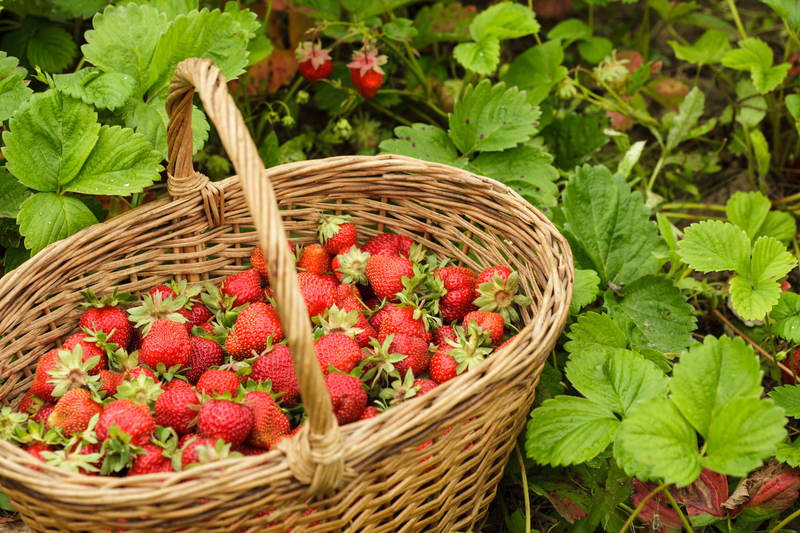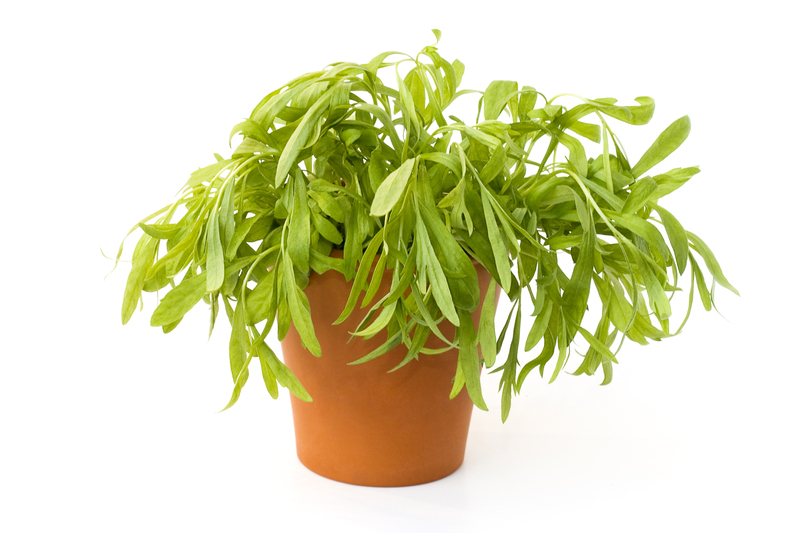Discover Gardening's Role in Mitigating Climate Change
Posted on 17/09/2025
Discover Gardening's Role in Mitigating Climate Change
Climate change is arguably the defining challenge of our times. As governments and industries grapple with large-scale solutions, home gardeners and urban green enthusiasts are discovering that their backyards can make a real difference in addressing the environmental crisis. Gardening's role in mitigating climate change is becoming increasingly important, with practical actions leading to meaningful results on both local and global scales.

Understanding Climate Change and Its Urgency
What Is Climate Change?
Climate change describes the long-term alteration in the Earth's climate patterns, driven mainly by human-induced factors. Chief among these is the increased emission of greenhouse gases, including carbon dioxide (CO2) and methane, largely from the burning of fossil fuels, land-use change, and deforestation.
- Global warming and increased average temperatures
- Extreme weather events such as droughts, floods, hurricanes
- Loss of biodiversity and changes in ecosystems
- Rising sea levels due to melting ice caps
The need for immediate action is critical. While major policy changes are ongoing, individual actions--especially in gardening--can complement these efforts and accumulate into a larger impact.
Why Gardening Matters for the Climate
The Science of Carbon Sequestration through Plants
One of the most powerful ways that gardens assist in climate mitigation is through carbon sequestration. Plants, through photosynthesis, absorb carbon dioxide from the air and store it in their tissues and in the soil. Healthy and diverse gardens act as important carbon sinks that help fight global warming.
Did you know? Urban and suburban gardens collectively cover an area equivalent to major forests in some countries, meaning the climate impact of gardening is not just symbolic, but significant.
Reducing Urban Heat Islands
Cities tend to become hotter than the surrounding areas--a phenomenon known as the urban heat island effect. Gardens, lawns, green roofs, and community plots all help cool things down by providing shade and releasing moisture through a process called evapotranspiration.
- Lower cooling costs for surrounding buildings
- Improved air quality
- Reduced heat-related health risks
Promoting Biodiversity and Resilience
Climate-resilient gardens support biodiversity, which is key for a stable ecosystem. Diverse plantings and native species provide food and shelter for pollinators, birds, and beneficial insects, making communities more resilient to climate impacts.
Strategies for Climate-Friendly Gardening
Build Healthy Soils
Soil is a major carbon store--containing more carbon than all the world's plants and atmosphere combined. Regenerative gardening practices can boost this carbon storage:
- Composting: Recycle kitchen scraps and garden waste, returning organic matter to the soil and reducing landfill methane emissions.
- Mulching: Cover bare soil to inhibit erosion, conserve water, suppress weeds, and add organic content as it breaks down.
- Minimized Disturbance: Practice low- or no-dig gardening to preserve soil structure and microbial life.
Plant Trees & Perennials
Trees are the powerhouse of carbon storage in the garden. Their deep roots and long lifespans mean more CO2 locked away for longer. Consider planting:
- Shade trees: Cool your home naturally and cut air conditioning use
- Fruit and nut trees: Provide food, shade, and wildlife habitat
- Deep-rooted perennials: Such as berry bushes and native shrubs
Tip: Mix native species with your favorite fruit trees for maximum climate adaptation and biodiversity.
Grow Your Own Food
Food production accounts for roughly one third of global greenhouse gas emissions. By growing even a small portion of your own produce, you:
- Reduce "food miles": The carbon footprint associated with transporting food from farm to table
- Lower reliance on chemicals: Homegrown food can be organic and pesticide-free
- Cut packaging waste: Fresh greens straight from the garden need no plastic wrappings
Make Water Use Efficient
Many regions are experiencing both droughts and floods due to climate change. Responsible water use in gardening helps buffer these extremes:
- Install rain barrels to capture stormwater runoff
- Choose drought-tolerant plants
- Use drip irrigation systems over sprinklers for targeted watering
- Mulch and compost to retain soil moisture
Community Gardening for Climate Solutions
Connecting Neighborhoods and Building Resilience
Community gardens transform abandoned lots and urban spaces into productive, green sanctuaries. They become hubs for education, climate advocacy, and resource sharing. The result is not just better food security, but strengthened connections and climate resilience at the neighborhood scale.
Urban Agriculture
Urban gardening--from rooftop plots to vertical gardens--not only beautifies cities but reduces heat, absorbs carbon, and often uses recycled materials or hydroponic systems that save both water and space.
Educational Impact and Climate Awareness
Participants in community and school gardens often become climate advocates in their own right, learning first-hand about ecosystems, biodiversity, and sustainability. Many community gardens incorporate composting programs and tree planting drives that have a direct impact on climate mitigation goals.
Gardening Techniques That Reduce Greenhouse Gas Emissions
Organic Gardening Practices
Organic methods avoid synthetic fertilizers and pesticides, both of which are produced with fossil fuels and can release nitrous oxide--a potent greenhouse gas--into the atmosphere. By focusing on crop rotations, natural pest control, and soil health, organic gardeners create ecosystems that effectively lock up more carbon and emit fewer pollutants.
Reducing Lawn Size
Traditional lawns often require significant mowing (using fossil-fuel-powered machines), watering, and chemical inputs. By replacing turf with flower beds, native grasses, or edible landscapes, you save resources, support wildlife, and sequester more carbon.
Using Electric or Manual Tools
Gas-powered lawnmowers and trimmers are surprisingly high polluters. Opt for electric, battery-operated, or manual gardening tools. These have a lower carbon footprint and are quieter, supporting a better neighborhood environment.
Climate-Smart Plant Choices
Native and Adaptive Plants
Native plants are naturally resistant to local pests and drought, require less maintenance, and provide superior habitat for pollinators. They thrive in the face of changing climate conditions, requiring fewer inputs and sequestering carbon efficiently.
Pollinator Gardens
Pollinators such as bees and butterflies are crucial for food security and healthy ecosystems. By planting a diverse range of flowering plants that bloom throughout the season, you help maintain healthy populations of these vital insects, strengthening ecosystems against climate disruption.
Did you know? A single yard filled with native flowers and shrubs can support hundreds of native pollinator species, some of which are vital for crop pollination in agriculture.
Tech Innovations in Climate-Conscious Gardening
Smart Gardening Devices
The rise of smart irrigation systems, soil moisture sensors, and data-driven gardening apps allows for optimized planting schedules, efficient water use, and minimal waste--essential for sustainable gardening in a changing climate.
Composting Technology
New composters can handle a wider variety of plant and food scraps, breaking them down more efficiently while reducing methane formation compared to landfills.
Vertical and Hydroponic Gardening
Modern gardens aren't limited to the ground. Vertical gardens and hydroponic set-ups make it possible to grow food even where space is scarce, reducing the need for long-distance food transport and maximizing urban green spaces' climate benefits.
The Broader Impact: From Garden to Global
Cumulative Power of Individual Actions
While a single garden may seem insignificant, the collective power of millions of gardens across the world is immense. Each patch of green--whether it's a large backyard, a city balcony, or a community plot--acts as a small carbon sink and sanctuary for biodiversity.
- Millions of home gardeners can shift food systems towards more sustainable, local production.
- Neighborhoods banding together for tree planting and green space creation can transform urban environments and reduce city carbon footprints.
- Educated youth through school gardening programs become future climate stewards.
Advocating for Policy Change
Visible, thriving gardens empower residents to support green public policies, investment in urban forestry, protection of green spaces, and stronger climate action at all levels of government.
Gardening as Climate Action
Choosing sustainable gardening practices is more than a hobby--it's a powerful form of climate action. Each effort, from planting a pollinator patch to building healthy soils or growing your own tomatoes, contributes to the vital work of climate change mitigation.

Getting Started: Actionable Steps for Climate-Smart Gardening
- Assess your space: Start small if needed--a window box or a container garden is still helpful.
- Compost at home to recycle nutrients and build soil health.
- Choose native or climate-adapted plants for lower water use and resilience.
- Grow your own food to lower your personal carbon footprint.
- Reduce reliance on chemicals and gas-powered tools.
- Advocate for community and municipal gardening programs.
Remember, every plant you grow, every kilo of compost you make, and every square foot of green space you support helps tip the scales towards a healthier, more livable planet.
Conclusion: Cultivating Hope through Climate-Friendly Gardening
Discovering gardening's role in climate change mitigation is about recognizing the real, measurable impact of our choices--right outside our doors. When gardens are designed and managed thoughtfully, they foster biodiversity, sequester carbon, reduce waste and pollution, and strengthen community bonds.
By practicing sustainable gardening for climate change, you join a global movement cultivating hope, health, and a promising future for generations to come. Start today--your patch of earth can be a powerful part of the solution.
Related keywords: climate change and gardening, climate-friendly gardening, sustainable gardening, gardening as climate action, carbon sequestration in gardens, urban gardening and climate, benefits of gardening for the climate



